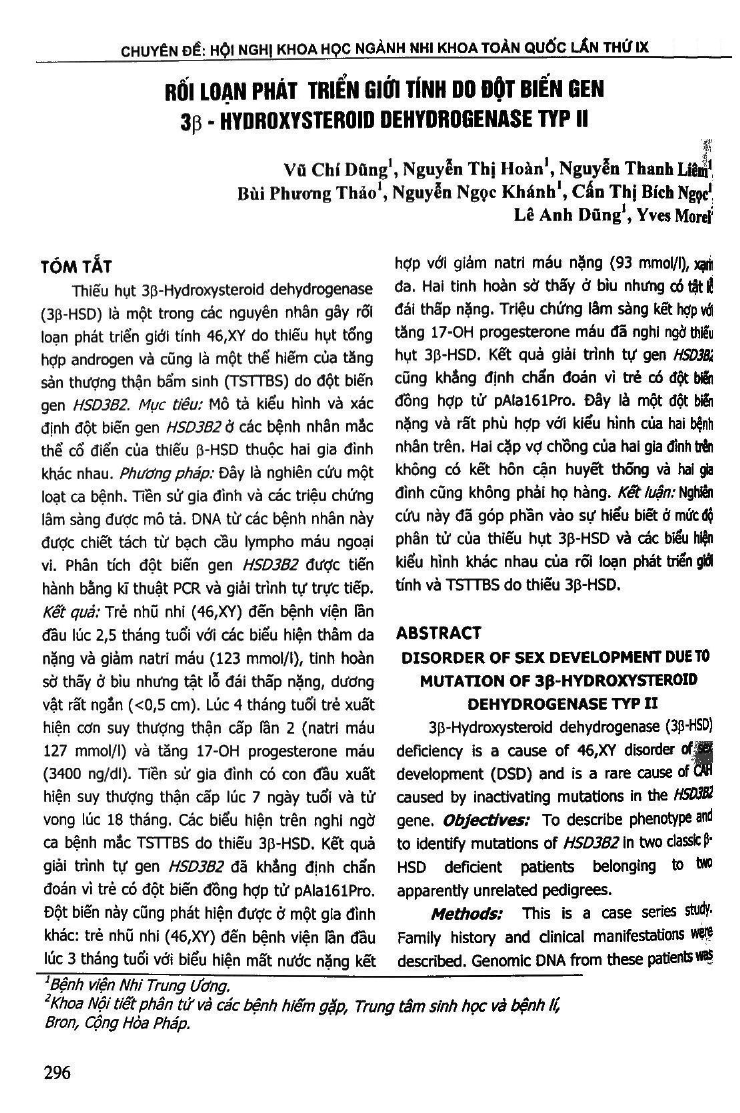
3beta-Hydroxysteroid dehydrogenase (3beta-HSD) deficiency is a cause of 46,XY disorder of sex development (DSD) and is a rare cause of CAH caused by inactivating mutations in the HSD382 gene. Objectives: To describe phenotype and to identify mutations of HSD382 in two classic beta-HSD deficient patients belonging to two apparently unrelated pedigrees. Methods: This is a case series study. Family history and clinical manifestations were described. Genomic DNA from these patients was extracted using standard procedures from the peripheral blooclleukocytes. Mutation analysis of b HSD382 was performed using Polymerase chain reaction (PCR) and DNA direct sequencing. Results: The 46,XY newborn referred at 2.5th month of life with salt loss associated with hyponatremia (123 nmol/L) and hyperpigmentation. The testes were palpable in the scrotum but associated with a severe a hypospadias (micropenis 0.5 cm; posterior). At 4 months of age, a second adrenal crisis has occurred with hyponatremia 127 nmol/L and increased 170H-Progesterone (3400 ng/dl) in this 46,XY DSD. This clinical and biological data associated with a sibling with female phenotype deceased at 18 months old after adrenal crisis (1st occurred at 7 days of life) suggest the diagnosis of 3beta-HSD deficiency. The sequencing of HSD382 confirms the diagnosis because he is homozygous for a missense mutation, pAla161Pro. This mutation affects an aminoacid conserved in all species and is located in one two ahelix involved in the dimerization of the two sub-units of the enzyme. The changing from Alanine to Proline could break the alpha-helix. The same mutation has been found in the other family. The 46,XY newborn referred at 3th month of life with severe dehydration associated with hyponatremia (93 nmol/L) and hyperpigmentation. The testes were palpable in the scrotum but associated with a severe hypospadias (micropenis 0.5 cm; posterior). Clinical presentation and increased 170H-Progesterone (970 ng/dl) in this 46, XY DSD suggest the diagnosis of 3beta-HSD deficiency. The sequencing of HSD382 also confirms the diagnosis because he is homozygous for a missense mutation, pAla161Pro. The severity of this mutation correlates well with the phenotype in these patients. Parents of two unrelated pedigrees are not consanguinity. Conclusions: This study contributes to a better understanding of the molecular defects of 3beta-HSD and of the phenotypic heterogeneity of DSD and CAH related to 3beta-HSD deficiency.
- Đăng nhập để gửi ý kiến
